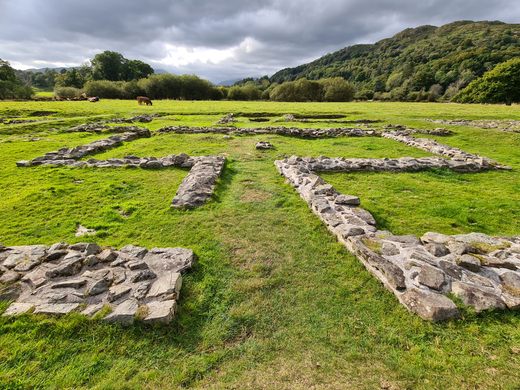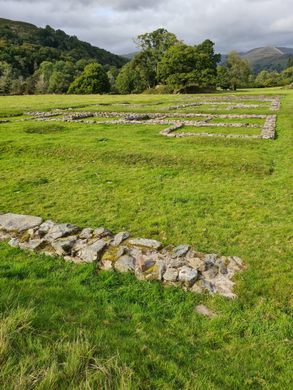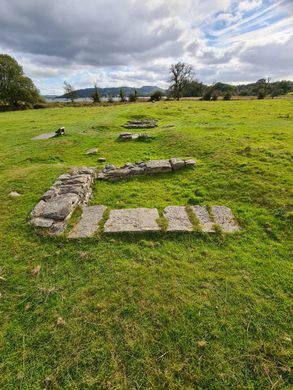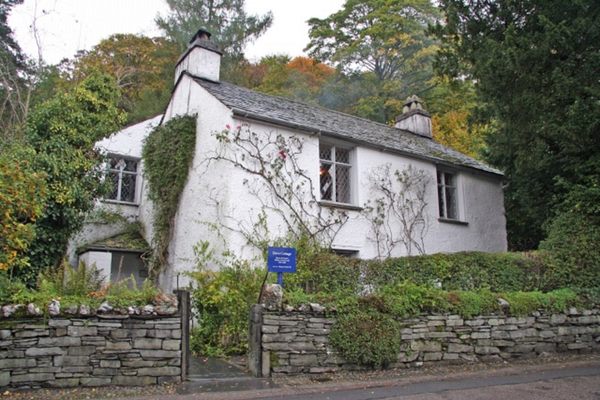AO Edited
Ambleside Roman Fort
This beautifully situated lakeside Roman settlement was likely built during the reign of the Emperor Hadrian.
On the northern shores of Windermere, just outside of Waterhead, the remains of what is now referred to as Ambleside Roman Fort probably date from the 1st or 2nd century. However, excavations have suggested the presence of an earlier fort with a turf wall and timber buildings, built around 90 A.D., this is just to the northeast side of the currently excavated site.
The Roman ruins at Ambleside have been tentatively identified as Galava, which was mentioned in the Antonine Itinerary. However, little is known of the fort’s history, and the identity of its garrisons has not been established for certain.
The Ambleside Roman Fort was a rectangular enclosure measuring about 91 by 128 meters, and covered an area of almost 1.3 hectares. The settlement was probably built under Emperor Hadrian’s rule to guard the Roman road from Brougham to Ravenglass. There is also assumed to have been a road south to the fort situated at Kendal. This location on two roads enabled the fort to act as a supply base.
The fort had towers located at each corner and was surrounded by a roughly coursed enclosure wall measuring 1.2 meters thick. A clay ramp backed the wall from the inside, and a ditch ran around the outside. Access to the fort was through one of four gates, one located on each side of the enclosure, three of which were narrow single-width gates, while the east gate was double-width and flanked by guard posts for extra protection.
Parts of the gates and sections of the fort walls are currently exposed, but the most significant surviving structures are the commanding officer’s house, the headquarters, and the granaries. These principal buildings of the fort were laid out in a row across the center of the fort’s interior. It is thought that the barracks at Ambleside were at least partially built from wood.
One of the notable finds from the fort now resides in Kendal Museum. This was the tombstone of Flavius Romanus, which dates from the third century, and was found in the 1960s to the east of the fort. The tombstone states that he was killed by an enemy inside the fort, but whether his killer was a member of an attacking force or a personal enemy is not known. Other finds from the area suggest that the fort was occupied into the later fourth century and beyond.
It is thought in some circles that this fort could have become the base for a local warlord and his militia after the Romans departed the area.
Know Before You Go
The site is open at any "reasonable time" and is free to visit, the finds are on display at Kendal Museum.
The side is just to the north of Bortans Park and can be accessed on foot by walking from either Ambleside or Waterhead public car parks.


















Follow us on Twitter to get the latest on the world's hidden wonders.
Like us on Facebook to get the latest on the world's hidden wonders.
Follow us on Twitter Like us on Facebook